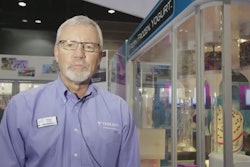While all team players in general want to help the project succeed and help the business succeed, many startup teams overlook the need to question the status quo by asking "why," or diving deeply enough into technical hurdles that compromise the full potential benefit of their project.
Robby Martin, senior engineering project manager with
Bush Brothers & Co., Knoxville, TN—famous for Bush's baked bean fame—explained to attendees of Pack Expo 2012 in Chicago that in-house project teams should ask "why" more often, of themselves and their suppliers.
Why does this matter? First consider a common approach to problem solving: When a startup team "runs into an unforeseen technical issue" such as a high rate of critical product failures during initial startup runs, all would agree that the issue is "critical and must be solved." The team would typically convene an "appropriate cross-section of experts to review problem and look at product samples." The same kind of action could be justified whenever testing uncovers a defect that can contribute to product failure.
But for Martin, a 27-year veteran of project management, business process development and continuous improvement coaching, good isn't always good enough.
The unexpected 'Why'
Consider a case where a defect is identified: Some problems are well understood, and may be solved when a team member cites, for example, "defect type 86753." And the fix may be equally obvious, and traced to "point X,Y, or Z on the line."
But every so often, a "lone voice" on the team will offer a question a seemingly simple fix with a question such as: "Should we look at any other potential causes? Maybe look at the process data?" One typical response, Martin says, is: "Nah, the cause is obvious! We've observed it, we've just got to make it go away!"
Assuming that lone voice is heard, though, the typical and somewhat positive result is that the team continues making adjustments to points X, Y and/or Z. The results may be only slightly better, but the team may be reconvened, and again, the improvements are only marginally successful.
Outside-the-box investigation
One aspect of project troubleshooting that companies often neglect is the potentially higher benefits they can gain by working more closely with their suppliers. For example, the measurements a company uses may be flawed, and the vendor may have a different measurement methodology.
This may lead the in-house project team to react: "Oh, something fundamental is out of spec?" And once the vendor is called in, the more appropriate response can be: "Oh, now we're working on adjustments to the fundamentals! With a well identified test plan that takes those fundamentals into account!"
The same mindset applies to companies with multimillion-dollar projects involving multiple sites, involving stakeholders from other company sites can broaden the project team's perspective. Still, things can go wrong. Some on the team may struggle with high-level timeline issues; find it hard to get all the details they need to feel fully committed or even struggle with culture or personality issues. This can leave the project leader to feel pressured or frustrated.
As a result, the team may be driven into a "fast, furious, even panicky reaction" to unexpected problems, especially those that are highly visible, in an effort to "do the right thing," Martin said. While that's not all bad, it might not produce the desired result.
In scampering to solve problems, it's difficult to have full team buy-in or commitment to a sustainable solution. Additionally, while the ideals of doing what's "good for the business" may be intact, Martin said, not all will have a uniform view of the specifics, so alignment—which doesn't have to be synonymous with "agreement"-- on the way a team should ask "why" or carry-out investigations, is critical to solving problem, meeting challenges and uncovering new opportunities.
Critical components of team alignment
Clear team goals, roles, scope and other fundamentals are critical components to a productive team. What does it take to get there? Martin cited five factors:
-
The time to avoid rushing through problems,
-
A focus on the "why" mindset from the start. This can be problematic to many effective "doers" who want to "get busy," but Martin said: "Don't let them!"
-
Using data for solutions based predominantly on fact vs. judgment, the latter of which may nonetheless be part of a balanced approach.
-
A structure that makes clear who is in charge, who owns key decisions, who speaks for varying functions and whose permission is needed at key steps.
-
Trust, gained through mutual understanding, without which some team members will fall back on old assumptions and compromise a full team effort.
To instill these traits in your team, companies must give certain tools to their project leaders, Martin concluded. They must provide clear goals (And boundaries); set clear challenges and expectations; empower leaders to "build their own alignment on how they will pursue things" and oversee their teams' progress, both individually and as a whole.
Bush Brothers & Co.The unexpected 'Why'Outside-the-box investigationCritical components of team alignment


























